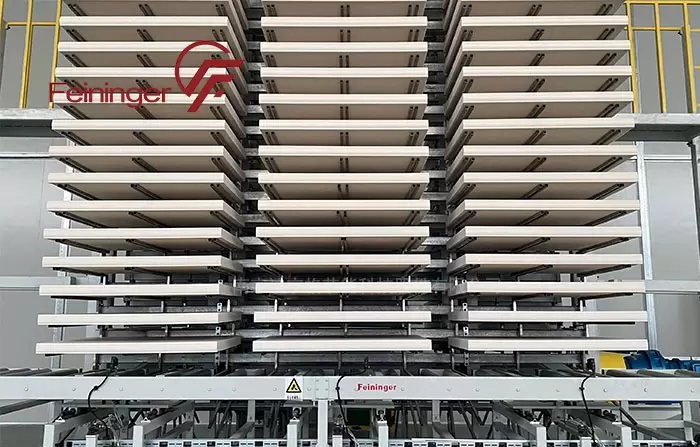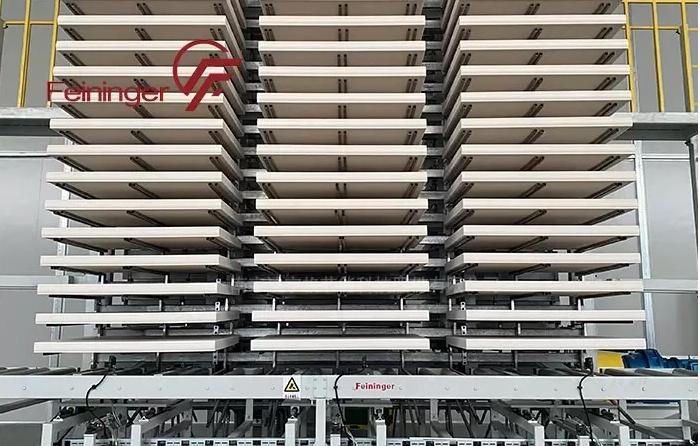PET foam extruder machines are essential in the production of lightweight, durable, and versatile materials used across various industries, including packaging, automotive, and construction. These machines are designed to ensure high performance, energy efficiency, and long-term reliability. Feininger’s PET sheet extrusion lines stand out by offering customizable modular designs that enhance productivity, reduce costs, and improve energy consumption.
However, like any high-tech industrial equipment, PET foam extruder machines can encounter issues from time to time. Understanding common problems and their solutions can help maintain optimal performance and prevent costly downtime. In this blog, we’ll explore some of the most common issues with PET foam extruder machines and provide solutions to help you troubleshoot and resolve them.

1. Inconsistent Foam Quality
Problem: One of the most common problems with PET foam extruder machines is inconsistent foam quality. This can manifest as uneven foam density, irregular cell structure, or poor surface finish.
Cause: The issue often stems from improper temperature control, incorrect material formulation, or fluctuations in extrusion speed.
Solution:
- Adjust temperature settings: Ensure the temperature profile across the extruder and die is optimized for the PET foam material. Consistent temperatures are crucial to achieving uniform foam characteristics.
- Check material formulation: Ensure that the PET resin and additives are correctly mixed and blended. Poorly mixed materials can lead to variations in foam quality.
- Monitor extrusion speed: Fluctuations in the extrusion speed can cause the foam to expand unevenly. Calibrate the extruder's speed control system to maintain a consistent flow rate.
2. Clogging or Blockages in the Extruder
Problem: Clogging is a frequent issue in PET foam extruder machines, which can disrupt production and even cause damage to the machine if left unresolved.
Cause: This can happen due to contamination in the raw materials, inadequate material pre-heating, or an improperly maintained extruder screw.
Solution:
- Clean the extruder regularly: Routine maintenance and cleaning of the extruder’s components, including the screws, barrel, and die, will prevent build-up that can cause blockages.
- Check material purity: Use high-quality, clean PET resin and ensure no contamination in the raw materials.
- Improve pre-heating: Ensure that the raw material is pre-heated correctly before entering the extruder to avoid jamming caused by uneven melting.
3. Excessive Energy Consumption
Problem: While PET foam extruder machines are designed for energy efficiency, sometimes production lines may experience excessive energy consumption, leading to increased operational costs.
Cause: Inefficient machine settings, such as incorrect screw speeds, improper heating, or using outdated technology, can lead to higher energy demands.
Solution:
- Optimize machine settings: Regularly review and adjust the settings, including screw speeds and heating profiles, to match the specific requirements of the foam being produced. Feininger’s modular PET sheet extrusion lines can be customized to optimize energy usage.
- Upgrade to energy-efficient components: If your machine is outdated, consider upgrading to newer, more energy-efficient motors or heating elements. Feininger’s continuous improvements in technology help reduce energy consumption without compromising productivity.
4. Overheating of the Extruder
Problem: Overheating can cause melting issues, leading to poor material quality or even machine damage. It’s crucial to maintain the correct temperature profile to ensure smooth operation.
Cause: Overheating typically occurs due to improper cooling, inefficient temperature control systems, or a malfunction in the temperature sensors.
Solution:
- Check cooling systems: Make sure that the cooling jackets and temperature control systems are functioning properly. Clean or replace any parts that may be clogged or damaged.
- Calibrate temperature sensors: Regular calibration of temperature sensors ensures accurate temperature control throughout the extrusion process.
- Monitor the machine load: Running the extruder beyond its rated capacity can cause overheating. Ensure the machine is not overloaded by adjusting production volumes or cycle times.
5. Inconsistent Product Dimensions
Problem: PET foam products, such as sheets or boards, may suffer from dimensional inconsistency, such as warping or uneven thickness, which can affect product quality.
Cause: This issue can arise due to improper die settings, inconsistent cooling, or variations in the extrusion speed.
Solution:
- Optimize die settings: Make sure the die is properly designed and aligned for the specific thickness and dimensions of the foam sheet being produced. Feininger’s customizable machines can be tailored to ensure precise control over the extrusion process.
- Improve cooling control: Uniform cooling is essential to prevent warping or dimensional changes. Ensure that cooling systems (such as cooling tunnels or air systems) are functioning effectively.
- Consistent extrusion speed: Variations in speed can lead to uneven product dimensions. Regularly monitor and adjust the speed of extrusion to maintain consistent output.
6. Wear and Tear on Key Components
Problem: Over time, key components of the PET foam extruder machine, such as the extruder screws, barrel liners, and die heads, may experience wear and tear.
Cause: Continuous use, improper material formulations, and lack of regular maintenance can accelerate wear on critical parts.
Solution:
- Regular maintenance: Conduct regular inspections and replace worn parts before they lead to significant breakdowns. Feininger’s equipment is designed with durability in mind, but consistent upkeep is crucial for long-term performance.
- Use high-quality materials: Ensure that the materials you are processing are of the highest quality to minimize wear on machine components.
Conclusion
Feininger’s PET sheet extrusion lines offer high performance, energy efficiency, and flexibility for companies in the plastics industry. However, like any advanced equipment, PET foam extruder machines may face challenges that could disrupt production. By understanding the common issues and knowing how to troubleshoot them, you can keep your production line running smoothly and efficiently.
Regular maintenance, optimal settings, and proper material handling are key to ensuring the longevity and reliability of your extruder machine. If you encounter persistent issues, don’t hesitate to consult with experts or upgrade your machinery to benefit from the latest technological advancements that improve productivity and reduce costs.



